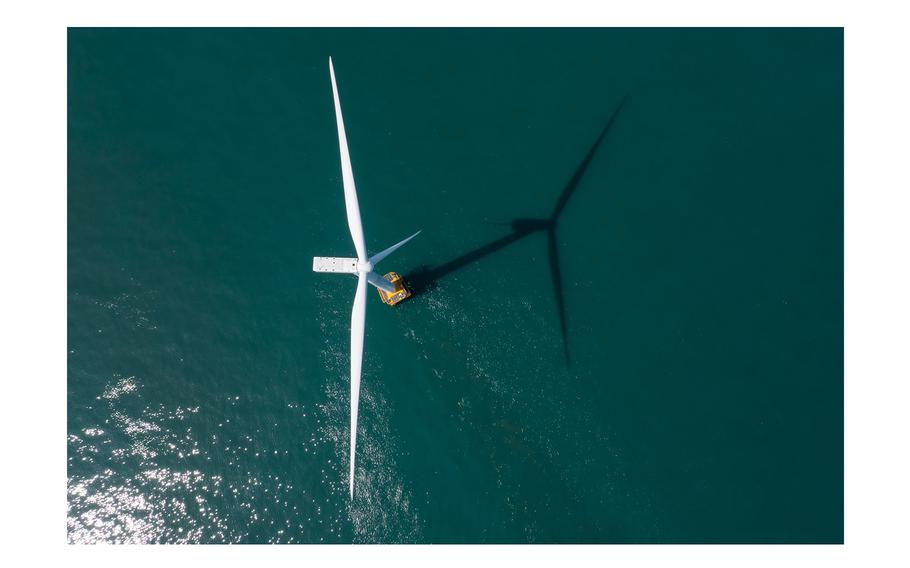
A wind turbine in the East China Sea of the coast of South Korea. (Bloomberg Creative Collection)
One of the world’s biggest investors in offshore wind farms is launching a new company that plans to build artificial islands in the North Sea to supersize the green energy projects.
Copenhagen Energy Islands, backed by Copenhagen Infrastructure Partners, aims to invest some €150 billion ($163 billion) in the coming decades on a series of islands that will use massive wind turbines to generate electricity and power green hydrogen production offshore. That is if they can overcome various technological and political hurdles.
“Offshore wind is simply the cheapest source of renewable energy in Europe available on a grand scale,” said Jakob Baruël Poulsen, managing partner of CIP. “The current installed stock of offshore wind will be increased tenfold at least. And it’s very clear that if that is to happen, we need to do it differently than how we are doing it currently. And energy islands offer a number of very important advantages.”
The idea already has gained some traction across the European Union, which has a goal to build at least 300 gigawatts of offshore wind in the coming years, more than 10 times today’s level.
Belgium plans to start construction on Princess Elisabeth Island in the North Sea, which the country says will be the first artificial island for energy infrastructure, serving as a hub to connect offshore wind farms to the Belgian electric grid. Other projects are also planned by Germany and Denmark, though the Danish government postponed a tender for an energy island last year due to high costs.
CIP estimates spending at least €1.5 billion for each of the artificial islands.
Baruël Poulsen said the islands would mainly produce power for hydrogen electrolyzers, and the resulting gas would be sent to land via pipes. This is a cheaper alternative than sending power to shore through cables, he said.
Current supply chains are incapable of providing enough cables to be able to send all the electricity to shore. Using the power at sea and then shipping the hydrogen in pipes could save as much as 20% in upfront investment per mega project that would otherwise be spent on cables, Baruël Poulsen said.
Still, many hurdles remain. Green hydrogen hasn’t yet been produced at scale and locating the machines offshore could add complications such as how to source fresh water for the electrolysis process. The islands also could become easy targets for attacks, chipping away at some of the benefits of decentralized renewables.
Visit bloomberg.com
©2024 Bloomberg L.P.